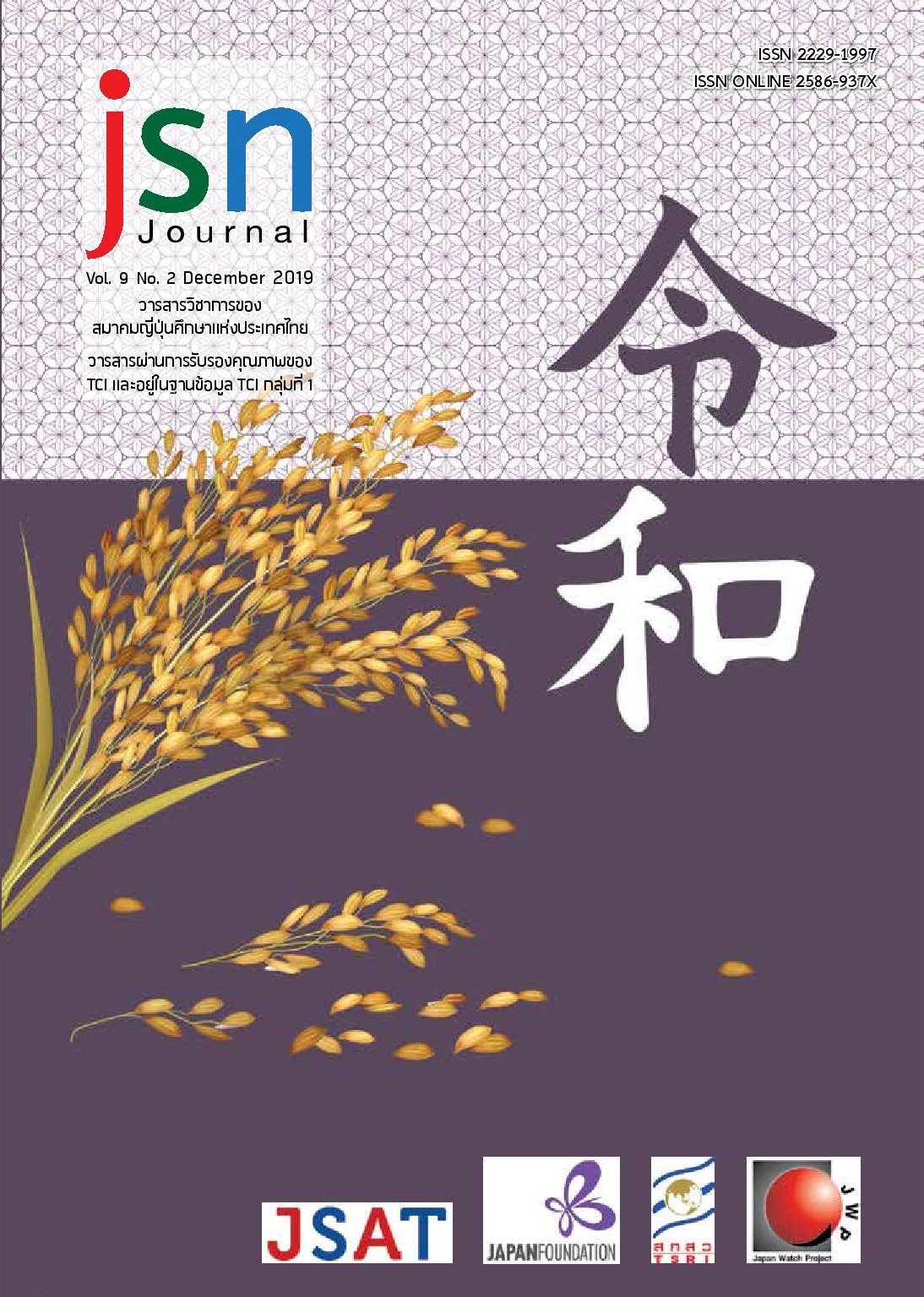The Beliefs about Gods that Influenced Master-retainer Relations in Japanese Medieval War Tales
Main Article Content
Abstract
This paper depicts the reasons behind Shōgun Yoritomo's likeness in relation to the Kamakura-Muromachi period or Middle Ages of Japan, a period in which Samurai warriors fought and killed one another and reflected on the impermanence of life. The story of warfare began as a collection of novels that outlined the power struggle between two powerful warrior clans, the Heike clan (平 家) and the Genji clan (源氏), from the late Hei-an period until the beginning of the Kamakura period. The conflicts are depicted in three prominent tales of war: Heike monogatari, Soga monogatari, and eiki. Finally, aided by his mighty army of warriors, Minamoto Yoritomo or Genji became the first shōgun or leader of the newly-created Japanese military government.
Images of Shōgun Yoritomo's perceived greatness were taken from various beliefs. Therefore this paper draws information from the three tales of war and other sources in order to capture the ideas held by groups of warriors towards Shōgun Yoritomo and to reconstruct his likeness based on the research. The research reveals that beliefs about gods and Buddhism, especially beliefs about the god Hachiman Daibosatsu, helped to promote the majestic and god-like image of Shōgun Yoritomo as being supported by the gods. In addition to his likeness, the research reveals beliefs about dreams and how they relate to justifying the ascension of Shōgun Yoritomo in relation to the resistance of the Heike clan.
Article Details
ข้อความและข้อคิดเห็นต่างๆ ในบทความเป็นของผู้เขียนบทความนั้นๆ ไม่ใช่ความเห็นของกองบรรณาธิการหรือของวารสาร jsn Journal
References
พระพรหมคุณาภรณ์ (ป.อ. ปยุตฺโต) .(2018). พจนานุกรมพุทธศาสน์ ฉบับประมวลศัพท์สหธรรมิก. สำนักพิมพ์
อรรถยา สุวรรณระดา.(2015). บันทึกการเดินทางไปไหว้สิ่งศักดิ์สิทธิ์ของมิชิท์ซุนะ โนะฮะฮะ ใน คะเงะโรนิกกิ. เอกสารหลังการประชุมวิชาการระดับชาติญี่ปุ่นศึกษาในประเทศไทย ครั้งที่ 8. xx-xx.
อรรถยา สุวรรณระดา. (2017). ธรรมเนียมความเชื่อญี่ปุ่นในวรรณกรรมสมัยเฮอัน โครงการเผยแพร่ผลงานวิชาการ คณะอักษรศาสตร์ จุฬาลงกรณ์มหาวิทยาลัย. สำนักพิมพ์.
市古貞次.(1978).『平家物語研究事典』.東京:明治書店.
__________.(2014).『新編日本古典文学全集45 平家物語』東京:小学館.
__________.(2015).『新編日本古典文学全集46 平家物語』東京:小学館.
梶原正昭.(2006). 『新編日本古典文学全集62 義経記』東京:小学館.
梶原正昭 、大津雄一、野中哲照.(2009). 『新編日本古典文学全集53 曾我物語』東京:小学館.
木村泰賢.(1968). 『木村泰賢全集』第五巻小乗仏教思想論.東京:大法輪閣.
黒板勝美、 國史大系編修會編.(1987). 『尊卑分脈』第三篇.東京:吉川弘文館.
佐伯真一.(2007).「日本中世文学研究の内外―『平家物語』と東アジアー」(『海を渡る文学』―日本と東アジアの物語・詩・絵巻・芸能―.東京:新典社.
重松明久(校注訓訳).(1986). 『八幡宇佐宮御託宣集』 東京:現代思潮社.
筒井英俊(校訂).(2003). 『東大寺要録』第四巻.東京:国書刊行会.
牧野和夫.(2006).「熊野本地・敦煌資料・如意輪観音―東アジアのなかの日本―」 『国文学解釈と鑑賞』.東京:至文堂.
松林靖明、松林靖明、信太周、犬井善寿.(2002).『新編日本古典文学全集41・将門記/陸奥話記/保元物語/平治物語』.東京:小学館.


